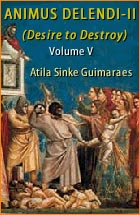Objections
You Misquoted a Document on
the Holy Week Reform
Dr. Byrne responds:
Dear Mr. J.I.,
Thank you for your request for clarification of certain issues regarding Holy Week.
First of all, let me explain that there is no confusion on my part. We are obviously talking at cross purposes, because the Decree I mentioned in my article was published in 1951 and signed by Cardinal Micara, whereas you have confused it with a different Decree published in 1955 and signed by Cardinal Cicognani.
If you read the article more carefully, you will find that the 1951 Decree concerned only the experimental Easter Vigil reform, not that of the entire Holy Week, which was the subject of the 1955 Decree. The problem is that you have confused the two.
The link I provided is correct. It takes you to the website which contains the official publications of the Holy See for any given year, in this case 1951. The web page is not a single 938-page document but a compilation of hundreds of documents pertaining to that year. All you needed to do was to scroll down to page 129 (referenced in Note 3 of my article) and you would have come to the document bearing the signature of Cardinal Micara, President of the Papal Commission for the Liturgical Reform. Incidentally, Cicognani could not have signed that document because he only succeeded Micara in 1953.
On the other point you mentioned, you are perfectly correct. The quote from the 1962 Missal is spurious. I have read the 1955 Decree in its original Latin form and can state without any shadow of doubt that it is not an authentic quote, but simply a gloss. The references to St. Wilfrid and St. Bede, for example, do not appear in the original. Yet, this quote is presented as an “Extract” from the aforesaid Decree. It need hardly be said that publishing false attributions is neither professional nor ethical.
The obvious explanation is that it was written by someone who was keen to justify the 1955 reforms, but less than keen about scrupulous accuracy.
We have reason to believe that this was not merely a careless slip, but an editorial policy, for a similar misattribution occurs in the same 1962 Missal: “Don't pray at Mass. Pray the Mass”, allegedly said by Pius X. As no official source has ever been cited for this, it is clearly apocryphal, written no doubt by someone who wants to promote the “Dialogue Mass.”
But it does illustrate the kind of thinking – or lack of it – that lies behind such quotes. Someone was prepared to present it as coming from the pen of Pius X without even knowing whether it was true or not. And credulous people believe it and spread it around.
Unfortunately, these quotes are doing the rounds among traditionalists, who accept them as read. The effect is like that of a stone dropped into a pond, which sends ripples eddying out in ever widening circles.
I hope this provides the necessary clarification.
Yours sincerely,
Dr. Carol Byrne

Posted April 18, 2017
______________________

______________________
______________________






















I’ve recently come across two detailed analyses of the Bugnini-engineered 1955 Holy Week “reforms” (including Dr. Bryne’s) and one reference (in True or False Pope?).
I’ve also discovered this paragraph in my Angelus Press 1962 Missal, on the page introducing Holy Week:
“Extract from the General Decree of November 16, 1955, which restored the Liturgy of Holy Week:
“Not only have the times been radically altered, but the ceremonies themselves have been modified. This is mainly by way of shortening and simplification; and the intention is to make the main ideas of each function stand out more clearly. For the most part, these changes are not innovations. [emphasis mine] They are mainly a return to an older form, more in line with what was known in the days of St. Wilfrid and St. Bede.” [penultimate paragraph, pg. 455]
I have two questions:
- First, the link she provides does not open that Decree, which is a 3-page document not including the Instructions, but a 938-page document in Latin, “APOSTOLICAE SEDIS COMMENTARIUM OFFICIALE.”
- Second, Cardinal Micara’s name does not appear on the Decree at all, as she states in this same paragraph, only Cardinal Cicogagni and Archbishop Carinci.
I would greatly appreciate your assistance in clearing up this confusion.May you have a Blessed Holy Week and Easter,
J.I.